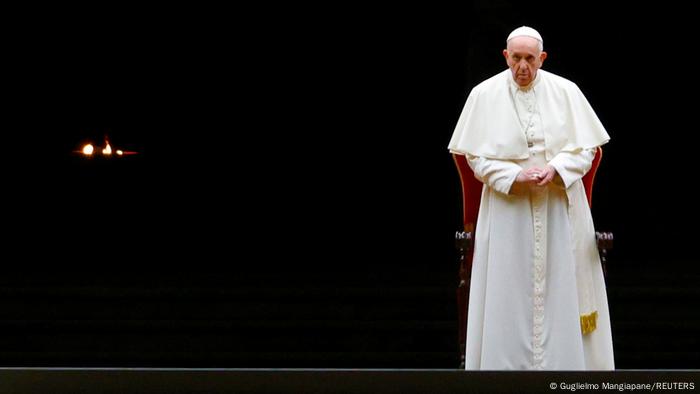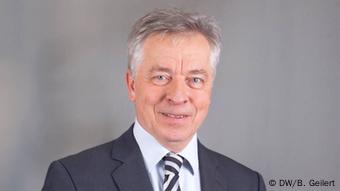By SAMUEL PETREQUIN and RAF CASERT

1 of 6
German Chancellor Olaf Scholz, right, and French President Emmanuel Macron address a media conference at the conclusion of an EU Summit in Brussels, Friday, Dec. 17, 2021. European Union leaders met for a one-day summit Thursday focusing on Russia's military threat to neighbouring Ukraine and on ways to deal with the continuing COVID-19 crisis. (John Thys, Pool Photo via AP)
BRUSSELS (AP) — The leaders of the European Union’s two most important nations faced reporters together during a joint news conference early Friday, a show of unity at the end of the EU’s final summit of the year.
Then two words - “nuclear energy” - intervened.
Heading into the Christmas week, atomic power is a topic on which France and Germany broadly differ, and one that has become a big thorn in the side of the EU as the 27-nation bloc decides whether to include nuclear-generated energy among the economic activities that qualify for sustainable investment.
German Chancellor Olaf Scholz, who took office last week, and French President Emmanuel Macron agreed on most of the issues tackled during Thursday’s summit, including Ukraine-Russia tensions and an immigration dispute with Belarus.
On the the sustainable investment rules, however, the two leaders have yet to reach a compromise. The rift over nuclear energy was enough to scuttle any agreement on energy prices during the summit.
A big rise in energy prices has reignited the debate about whether the EU should promote nuclear power projects as a way of becoming greener and more energy independent.
France has asked for nuclear power to be included in the so-called “taxonomy” by the end of the year, leading the charge with several other EU countries that operate nuclear power plants.
The group initially faced strong opposition from Germany and other members that wanted nuclear power to be ineligible for green financing, but Scholz adopted a peacebuilding tone in the summit’s final hours early Friday.
“We are talking about countries with different business models. It’s important that each EU country can pursue its own approach without Europe becoming disunited,” Scholz said. “At the end of the day, we will have to come together despite the different priorities we may have set.”
Germany’s remaining nuclear power plants are due to go offline next year. France derives about 70% of its electricity from nuclear energy.
Last month, Macron announced that France will start building its first new nuclear reactors in decades. Unveiling the plans, he said the the new reactors will help guarantee France’s energy independence and help reach carbon neutrality in 2050.
“It’s not a Franco-German discussion,” Macron said during the press conference. “There are different energy models in different European countries. What we want to achieve is agree on a taxonomy that allows us to continue with our industrial policy and to be coherent in decarbonizing our economies.”
Two years ago, EU leaders agreed that nuclear could be part of the bloc’s solution to making its economy carbon neutral by 2050. Leaving the possibility of using nuclear energy in their national energy mixes reassured the bloc’s coal-reliant countries, which are expected to suffer the most during the transition.
However, making future nuclear power projects eligible for billions in euros available as part of the European Green Deal while avoiding “greenwashing” remains a controversial issue.
Countries that want nuclear power to remain ineligble for green financing often cite the EU’s guidance that all investments financed by the pandemic recovery fund should not harm the bloc’s environmental goals.
“The lack of agreement shows how lively this is, not only in our country, but throughout Europe,” Belgian Prime Minister Alexander De Croo, who faces a domestic crisis over how to phase out nuclear plants and still maintain energy security to his citizens.
De Croo suggested that amid the energy price crunch, nuclear energy and gas could be temporarily eligible for funds.
“You have to be able to look sufficiently ahead, and if you do so you can assume that technologies like nuclear and gas can be useful technologies in the medium term to bridge the gap until we have fully sustainable energy,” De Croo said early Friday.
The ball is now with the EU’s chief, European Commission President Ursula von der Leyen. She is expected to present before the end of the year the list of activities eligible for the green investment funds and must decide whether nuclear energy and natural gas make the cut.
Von der Leyen has been under pressure from environmental groups and Green European lawmakers to resist the inclusion of both.
“Fossil gas and nuclear power have no place in the EU taxonomy” for sustainable activities, said Sven Giegold, a Green lawmaker in the European Parliament.
A low-carbon alternative to fossil fuels, nuclear energy represented around 26% of the electricity produced in the bloc in 2019, with 13 EU countries endowed with operational reactors.
___
Follow all AP stories about climate change at https://apnews.com/hub/climate.
BRUSSELS (AP) — The leaders of the European Union’s two most important nations faced reporters together during a joint news conference early Friday, a show of unity at the end of the EU’s final summit of the year.
Then two words - “nuclear energy” - intervened.
Heading into the Christmas week, atomic power is a topic on which France and Germany broadly differ, and one that has become a big thorn in the side of the EU as the 27-nation bloc decides whether to include nuclear-generated energy among the economic activities that qualify for sustainable investment.
German Chancellor Olaf Scholz, who took office last week, and French President Emmanuel Macron agreed on most of the issues tackled during Thursday’s summit, including Ukraine-Russia tensions and an immigration dispute with Belarus.
On the the sustainable investment rules, however, the two leaders have yet to reach a compromise. The rift over nuclear energy was enough to scuttle any agreement on energy prices during the summit.
A big rise in energy prices has reignited the debate about whether the EU should promote nuclear power projects as a way of becoming greener and more energy independent.
France has asked for nuclear power to be included in the so-called “taxonomy” by the end of the year, leading the charge with several other EU countries that operate nuclear power plants.
The group initially faced strong opposition from Germany and other members that wanted nuclear power to be ineligible for green financing, but Scholz adopted a peacebuilding tone in the summit’s final hours early Friday.
“We are talking about countries with different business models. It’s important that each EU country can pursue its own approach without Europe becoming disunited,” Scholz said. “At the end of the day, we will have to come together despite the different priorities we may have set.”
Germany’s remaining nuclear power plants are due to go offline next year. France derives about 70% of its electricity from nuclear energy.
Last month, Macron announced that France will start building its first new nuclear reactors in decades. Unveiling the plans, he said the the new reactors will help guarantee France’s energy independence and help reach carbon neutrality in 2050.
“It’s not a Franco-German discussion,” Macron said during the press conference. “There are different energy models in different European countries. What we want to achieve is agree on a taxonomy that allows us to continue with our industrial policy and to be coherent in decarbonizing our economies.”
Two years ago, EU leaders agreed that nuclear could be part of the bloc’s solution to making its economy carbon neutral by 2050. Leaving the possibility of using nuclear energy in their national energy mixes reassured the bloc’s coal-reliant countries, which are expected to suffer the most during the transition.
However, making future nuclear power projects eligible for billions in euros available as part of the European Green Deal while avoiding “greenwashing” remains a controversial issue.
Countries that want nuclear power to remain ineligble for green financing often cite the EU’s guidance that all investments financed by the pandemic recovery fund should not harm the bloc’s environmental goals.
“The lack of agreement shows how lively this is, not only in our country, but throughout Europe,” Belgian Prime Minister Alexander De Croo, who faces a domestic crisis over how to phase out nuclear plants and still maintain energy security to his citizens.
De Croo suggested that amid the energy price crunch, nuclear energy and gas could be temporarily eligible for funds.
“You have to be able to look sufficiently ahead, and if you do so you can assume that technologies like nuclear and gas can be useful technologies in the medium term to bridge the gap until we have fully sustainable energy,” De Croo said early Friday.
The ball is now with the EU’s chief, European Commission President Ursula von der Leyen. She is expected to present before the end of the year the list of activities eligible for the green investment funds and must decide whether nuclear energy and natural gas make the cut.
Von der Leyen has been under pressure from environmental groups and Green European lawmakers to resist the inclusion of both.
“Fossil gas and nuclear power have no place in the EU taxonomy” for sustainable activities, said Sven Giegold, a Green lawmaker in the European Parliament.
A low-carbon alternative to fossil fuels, nuclear energy represented around 26% of the electricity produced in the bloc in 2019, with 13 EU countries endowed with operational reactors.
___
Follow all AP stories about climate change at https://apnews.com/hub/climate.



















